 From quirky concepts to radical new launches, the Geneva Motor Show plays a worthy host
From quirky concepts to radical new launches, the Geneva Motor Show plays a worthy host
Words: Rohit Paradkar
Â
The Geneva Palexpo came alive once again in the first week of March to host the 2009 Salon International de l’Auto. The giant convention centre became a global showcase for new technologies like the FIAT MultiAir and bio-fuel W12 to futuristic concepts like the Rinspeed iChange and the EDAG Light Car. Even with the economic crunch getting tighter by the day, Geneva continued its glamorous stance with launches like the Chevy Spark and the One-77 supercar. Over the next few pages, we’ll take you for a virtual tour of the exhibits that matter the most.
TATA Nano Europa
 The one lakh rupee is car is here. But since its inception at the ninth Auto Expo, the Nano has raised a lot of brows regarding its fortunes in the European market. TATA have decided to silence their critics with a European concept of the low cost city car. The most striking difference is in its appearance. The Nano Europa gets LED lights, 14-inch four lug alloys and a slightly longer wheelbase. The concept also gets an all-aluminium three cylinder mill with a five-speed gearbox and a power steering for better highway performance. Safety, which was a global concern for the Indian Nano, has been worked upon too. The Europa gets stability control, anti-lock brakes and airbags. It is expected to be priced at €5,000 (Rs 3 lakh approximately) when it makes it to production and goes on sale in Europe. Expect the finer elements of the Europa to trickle down to our local variant within a few months of its international launch.
The one lakh rupee is car is here. But since its inception at the ninth Auto Expo, the Nano has raised a lot of brows regarding its fortunes in the European market. TATA have decided to silence their critics with a European concept of the low cost city car. The most striking difference is in its appearance. The Nano Europa gets LED lights, 14-inch four lug alloys and a slightly longer wheelbase. The concept also gets an all-aluminium three cylinder mill with a five-speed gearbox and a power steering for better highway performance. Safety, which was a global concern for the Indian Nano, has been worked upon too. The Europa gets stability control, anti-lock brakes and airbags. It is expected to be priced at €5,000 (Rs 3 lakh approximately) when it makes it to production and goes on sale in Europe. Expect the finer elements of the Europa to trickle down to our local variant within a few months of its international launch.
Audi TT RS
Audi’s entry-level sports coupe finally gets a convertible sibling with the long awaited RS badge at Geneva. What comes along with the badge is a 2.5-litre turbocharged direct-injection petrol engine that puts out more than 340PS and is mated to a six-speed manual gearbox. The entire package sprints to a 100km/h in 4.6 seconds flat for the coupe and 4.7 seconds for the open top. The two cars will go on sale in May in the European market. Expect the duo to follow the Audi TT route and enter India by mid-2010, albeit with a subtler state of tune to sustain our fuels.
Alfa Romeo MiTo GTA Concept
A sportier version of the MiTo was displayed at Geneva in the form of a production ready prototype called the MiTo GTA Concept. It features a pair of racing bucket seats and a GT style five-point harness. FIAT also separately displayed the main highlight of the MiTo GTA – the turbocharged four-cylinder engine with MultiAir technology. However, when the car goes on sale, expect a standard set of four seats to make it to the production trim. The engine is expected to retain the 230PS state of tune.
Audi A4 Allroad
Audi’s flared fender A4 was rolled out at Geneva with the Allroad tag and went on sale in Europe late last month. The car features the coveted all-wheel drive Quattro system and sports a taller ground clearance to aid its ‘go anywhere’ character. The engine options range from a 2.0 TFSI petrol to 2.0 and 3.0 TDI oil burners. For India though, Audi will consider plunking the same engines as the A4 sedan to reduce costs. We speculate the A4 Allroad to hit local showrooms by early 2010 at a price dearer by Rs 3-4 lakh than the corresponding A4 sedan variant.
FIAT 500 Convertible
The Cinquecento found its open top sibling at the Geneva Motor Show with the unveiling of the 500C. However, the car is not a true-blue cabriolet, since the fabric follows a roll back function instead of a drop top, letting the roof pillars stay in place. There is, however, a rear visibility concern with the mound of the rolled back canvas roof stacking up where the rear windscreen would be. Nevertheless, the 500C has succeeded in attracting an equal amount of attention or more than the 500 hatch itself. It comes with all the 500 paraphernalia like the three petrol and diesel engine options and the start/stop technology. Expect FIAT India to get this car here by mid 2010.
Skoda Fabia Scout
 The blokes at Skoda unveiled a rugged new Fabia variant in the form of the Scout. The car is a based on the Fabia Estate but gets a muscular look with flared plastic bumpers and side skirts. Two roof bars are added to aid its ability of carrying adventure equipment. It gets the underpinnings of the Fabia Estate too. Unfortunately, it will come with the same engine options and a front wheel drive system. Driving on the lines of the Fabia’s success, the Scout might make it to India instead of the Estate (Combi).
The blokes at Skoda unveiled a rugged new Fabia variant in the form of the Scout. The car is a based on the Fabia Estate but gets a muscular look with flared plastic bumpers and side skirts. Two roof bars are added to aid its ability of carrying adventure equipment. It gets the underpinnings of the Fabia Estate too. Unfortunately, it will come with the same engine options and a front wheel drive system. Driving on the lines of the Fabia’s success, the Scout might make it to India instead of the Estate (Combi).
Rinspeed iChange Concept
For all the quirky and innovative concepts that they build, Rinspeed has been one of the most visited exhibits at Geneva. This year, Frank Rinderknecht’s inventive brainchild was the iChange – a concept that changes form depending on the number of people (ranging between one and three) onboard. Instead of doors, the concept uses a large canopy for entry and exit and an Apple iPhone is used in lieu of a traditional key. The drivetrain is an electric one for zero emissions and can drive the 1050 kilo concept to a 0-100km/h sprint in 4 seconds with a top whack of 220km/h.
Porsche 911 GT3
Standing proudly at the Porsche exhibit at Geneva was the 911 GT3. Based on the second generation 997 family of Porsches, the GT3 uses a naturally aspirated 3.8-litre flat six engine with a power output of 430PS. Porsche are touting this car to be the most dynamic naturally aspirated 911 ever and we at CAR India have every reason to believe that. With a 0-100km/h acceleration of 4.1 seconds and a top whack of more than 300km/h, the GT3 theoretically comes intensely close to supercar performance. Expect the car to hit global showrooms by Q3 2009 and India by early 2010.
Opel Ampera
Amidst the uncertain future of the GM-Opel relationship, the German carmaker unveiled the Ampera sedan at Geneva. The car is essentially a rebadged Chevrolet Volt albeit with more aggressive front and rear styling and Euro-spec interiors. Under the body, the Ampera uses the same Voltec propulsion from the Chevy Volt and uses similar body panel construction for efficient aerodynamics. Opel also plan to re-engineer this car as a right-hand drive under the Vauxhall brand. Both cars are expected to be produced by the end of 2011, approximately a year after the Chevy Volt goes on sale.
Lamborghini Murcielago LP670-4SV
 The recent upgrade to the Murcielago supercar from Lamborghini was unveiled at Geneva in the form of the LP670-4 SV (Super Veloce). As the LP670 naming convention suggests, the new Murcielago extracts 670PS from the 6.5-litre V12 before feeding it to the all-wheel drive system. The entire package rockets from null to 100km/h in a mere 3.2 seconds and continues gaining velocity until the limiter kicks in at 340km/h. The SV has also managed to lose approximately 100 kilos in the bid to become the fastest Lamborghini ever. The supercar borrows design elements from the Reventon and features a GT style ‘Aeropack Wing’ rear spoiler to aid downforce. If Lamborghini’s SV legacy is anything to go by, then consider this car to be the last of the variants in the Murcielago line-up before the supercar gets replaced with an even more monstrous model.
The recent upgrade to the Murcielago supercar from Lamborghini was unveiled at Geneva in the form of the LP670-4 SV (Super Veloce). As the LP670 naming convention suggests, the new Murcielago extracts 670PS from the 6.5-litre V12 before feeding it to the all-wheel drive system. The entire package rockets from null to 100km/h in a mere 3.2 seconds and continues gaining velocity until the limiter kicks in at 340km/h. The SV has also managed to lose approximately 100 kilos in the bid to become the fastest Lamborghini ever. The supercar borrows design elements from the Reventon and features a GT style ‘Aeropack Wing’ rear spoiler to aid downforce. If Lamborghini’s SV legacy is anything to go by, then consider this car to be the last of the variants in the Murcielago line-up before the supercar gets replaced with an even more monstrous model.
Frazer-Nash Namir Guigiaro Concept
Age old carmaker Frazer-Nash is now a maker of hybrid drivetrains. To showcase its latest electric propulsion system, the British brand tied up with Italian design house Guigiaro to display the Namir concept at Geneva. It uses an 814cc rotary engine to drive a generator which in turn charges a 400V lithium polymer battery pack to feed a cumulative output of 362PS to the electric motor powered axles. The electric propulsion system is said to give the Namir a top whack of 300km/h and a 0-100km/h stint in less than 3.5 seconds – a decent performance claim for a concept that returns 20kmpl!
Rolls-Royce 200EX Concept
The 200EX is Rolls-Royce’s idea of a smaller super luxury vehicle. However, at 5.4 meters in length, it’s almost as long as a Maybach 57. The 200EX, though displayed as a concept at Geneva, is a production ready prototype. When it goes on sale later this year, the only thing that is set to change is the car’s christening. It is most likely to be called the Silver Cloud. From the streamlined, brushed aluminium nose to the suicide doors and body lines, the 200EX is befitting to the ‘Sprint of Ecstasy’ ornament on the hood.
Aston Martin DBS-Volante
Amidst all the hoopla of the One-77 and the Lagonda concept, was the DBS Volante – a drop top version of the Quantum of Solace favourite, Aston Martin DBS. It gets the same 6.0-litre V12 as the DBS and can manage a top whack of over 300km/h even with the roof down. The open top car sprints from a standstill to 100km/h in under 4.5 seconds thanks to its aluminium, magnesium alloy and carbonfibre composite body. The rear mounted gearbox will be available with two options: a standard six- speed manual or an automatic Touchtronic.
Nissan Qazana Concept
A design preview of the Micra based crossover concept was the Qazana concept in Nissan’s Geneva exhibit. It shows off a pair of large headlight units contained within the muscular high rise bumper while angular day-time running lights are placed over the fender ridge. The concept features suicide doors, but like most concept to production transitions, these units will be replaced by conventional ones. The boomerang taillights are inspired from the 370Z while the body lines reflect the Micra lineage. The crossover will be produced in the Sunderland factory in Europe as well as the Chennai factory alongside the Micra.
EDAG Open Source Light Car Concept
EDAG unveiled an interesting concept at Geneva, called the Open Source Light Car. The rear section of the car makes an innovative use of the OLED technology to form a screen that can either display driver configured exterior lighting or a safety screen that can flash alerts to trailing vehicles. The chassis is constructed using recyclable basalt fibre while the car itself uses electric propulsion through compact drive motors contained within the wheels to maximize interior space. EDAG are ready to share all these technologies with prospective developers for further improvement free of cost, and hence the tag Open Source.
Chevrolet Spark
 The Chevrolet Spark was finally unveiled in its production trim at Geneva. Fortunately, the car carries forward the radical styling of the original 2007 concept and will also sport the flamboyant shade of metallic green. It will be made available globally with two engine options – 1.0-litre, 66PS and 1.2-litre, 78PS, both as petrol burners. Chevrolet claim these engines to be highly fuel efficient. The Spark/Beat will go on sale in India alongside the current Spark by November this year, in tandem with its global launch.
The Chevrolet Spark was finally unveiled in its production trim at Geneva. Fortunately, the car carries forward the radical styling of the original 2007 concept and will also sport the flamboyant shade of metallic green. It will be made available globally with two engine options – 1.0-litre, 66PS and 1.2-litre, 78PS, both as petrol burners. Chevrolet claim these engines to be highly fuel efficient. The Spark/Beat will go on sale in India alongside the current Spark by November this year, in tandem with its global launch.
Aston Martin Lagonda Concept
While many expected the revived Lagonda brand to take initial form as a super luxury sedan, Aston Martin instead unveiled the luxury brand on a crossover SUV concept based on the Mercedes GL-class platform. Since it’s been a long time intention of the British marque to build a SUV, it seems that the Lagonda brand, which marks its 100th anniversary this year, will be the product line for the SUVs. If produced, the Lagonda SUV will house a V12 from Aston itself with the underpinnings coming from the Merc GL. Aston is targeting more than a 100 countries, which also includes India, to market the Lagonda brand.
Skoda Yeti
After three years of development, Skoda finally unveiled the Yeti SUV at Geneva. As expected, the street ready version of the Yeti loses out on a lot of the original’s conceptual elements like the contrasting white roof, flared wheel arches, hidden door handles and the muscular front end which gave the original concept its radical form. The design of the headlights has been maintained though and the body lines are evocative of the original concept’s design. Engine choices will range between 1.2-litre to 2.0-litre configurations in petrol and diesel options. Like the Roomster, the Yeti too gets some innovative seating options like the three bucket seats in the last row for example.
Bentley Continental Supersport Bio-Fuel
The Continental Supersport is the fastest, most powerful production Bentley ever to have rolled out into the market. The W12 engine is now tuned to work on E85 ethanol as well, which Bentley claims, will reduce emissions by up to 70 percent. Bentley have managed to reduce the weight of the car by up to 100 kilos and have adopted various new technologies for doing so. With the weight loss and tinkering to the engine, the W12 now puts out a massive 612PS of power while offering flexible fueling options.
Ferrari 599XX
The 599XX is to the 599 Fiorano what the FXX is to the Enzo. This track spec 599 was unveiled in Geneva as an insight into the various technologies that Ferrari is currently working on. The prototype uses a retuned version of the 599’s V12 engine and can manage a power output of 700 prancing ponies. The revised and highly efficient Actiflow aerodynamic package is claimed to offer up to 280 kilos of downforce at 200km/h. The prototype borrows the KERS tech and wheel covers for the 19-inch competition rims from Ferrari’s F1 expertise. Like the FXX, the 599XX will be available to a select clientele and only 20-30 examples will be produced. Select elements of the 599XX will also make it to the 599 GTB Fiorano with the Handling GTE package when the latter goes on sale soon.
Aston Martin One-77
The costliest Aston Martin till date, the One-77 was finally shown in the flesh at Geneva. The car houses a 7.3-litre V12 engine producing more than 750PS and was quoted by Dr. Ulrich Bez as a ‘more than enough’ performance packed car. The chassis, as expected, uses an amalgamation of aluminium and carbonfibre. The lightweight construction is expected to propel the car to 100km/h from standstill in less than 3.5 seconds. Visually, the One-77 follows all the conventional lines of an Aston but at the same time, manages to look different and aggressive.
Hyundai ix-ONIC Concept
Hyundai previewed the basic design theme behind the new Tuscon SUV by way of the ix-onic (Ikk-onikk) concept. In spite of its 173 inch length, the concept appears brutally muscular and large. Hyundai has designed the front end of the ix-onic to define a hexagonal frontal design which will be the Korean carmaker’s new aesthetic identity. Expect these ploygonal design elements to trickle down to all their upcoming vehicles soon to give the entire product line-up a familial resemblance. The concept houses a 1.6-litre GDi mill – a new powerplant from Hyundai that is expected to allow flexible states of tune and commendably low emissions.






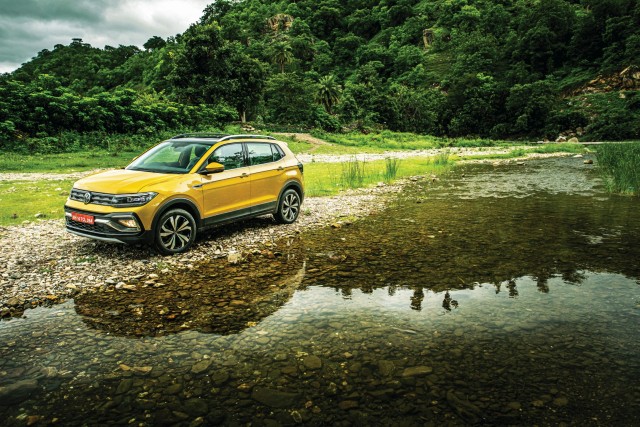
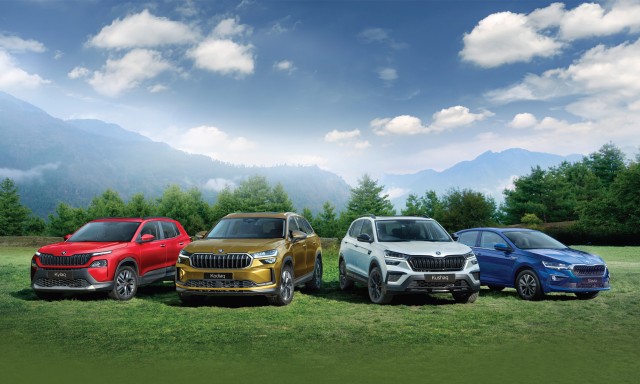

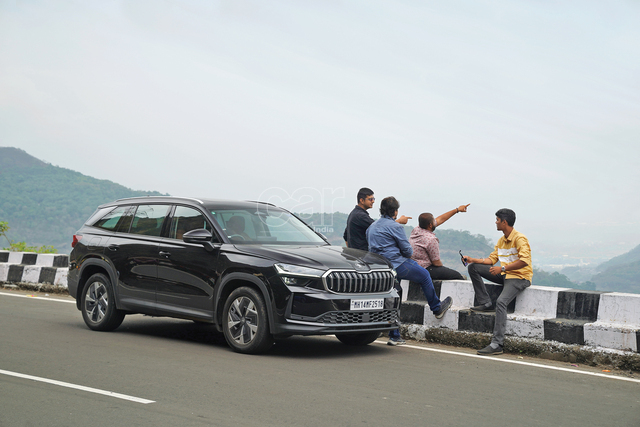


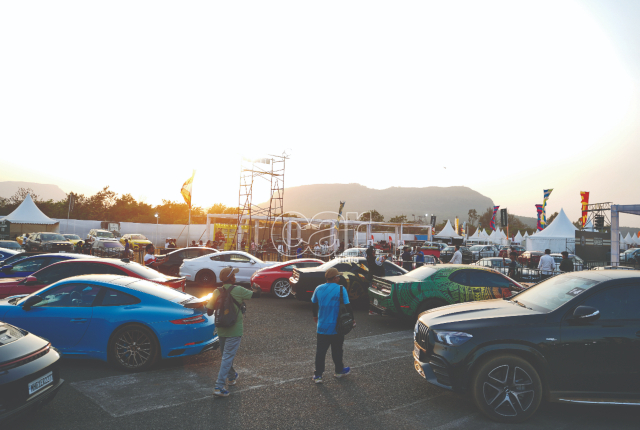
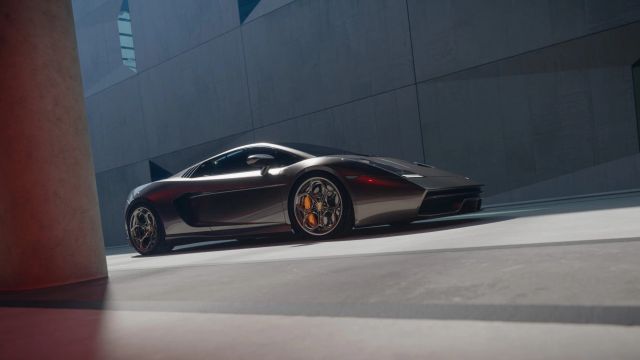


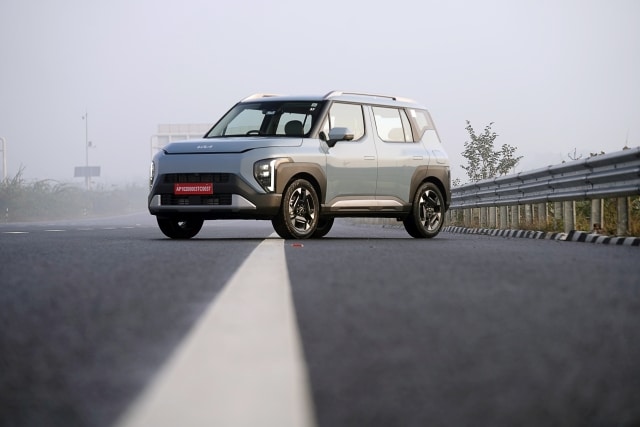




Leave a Reply